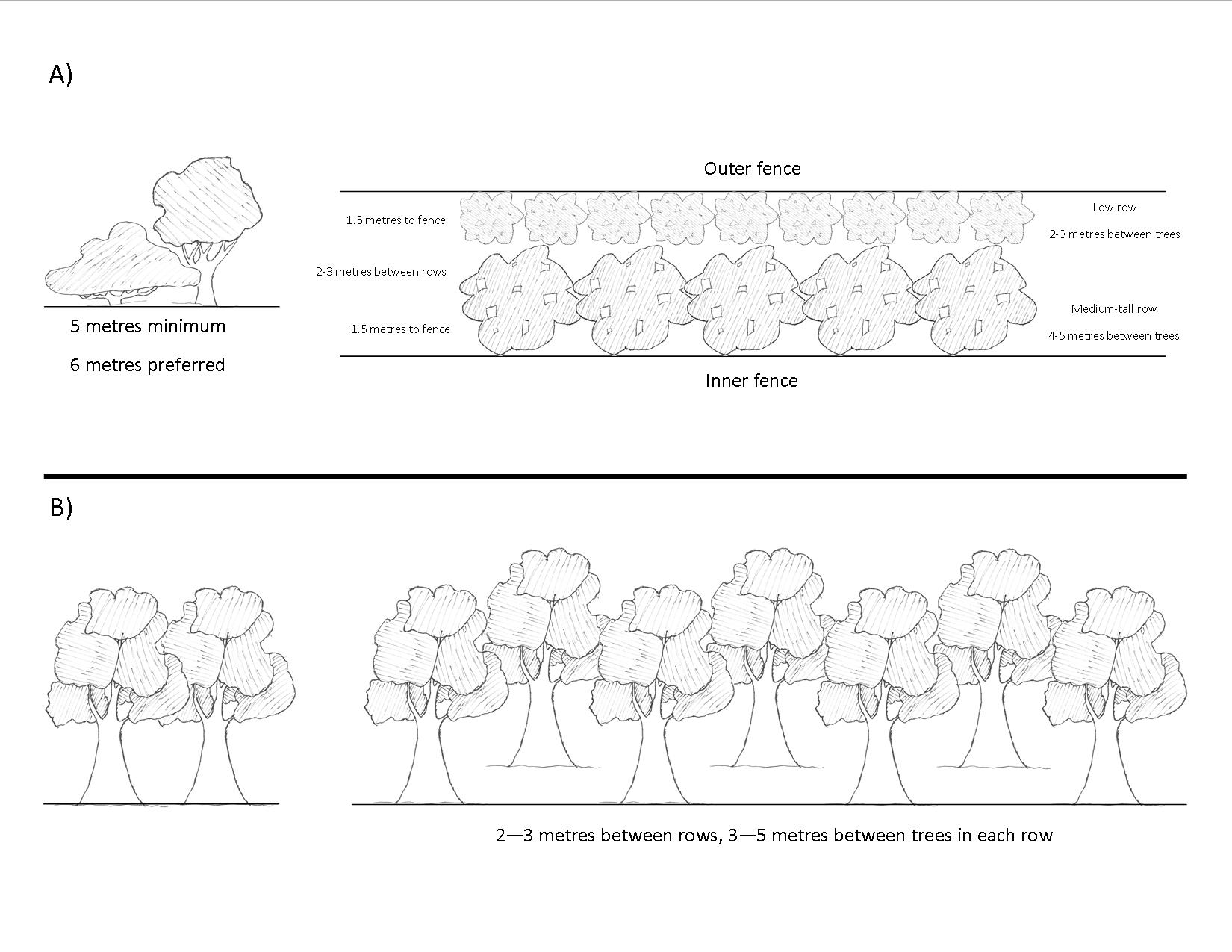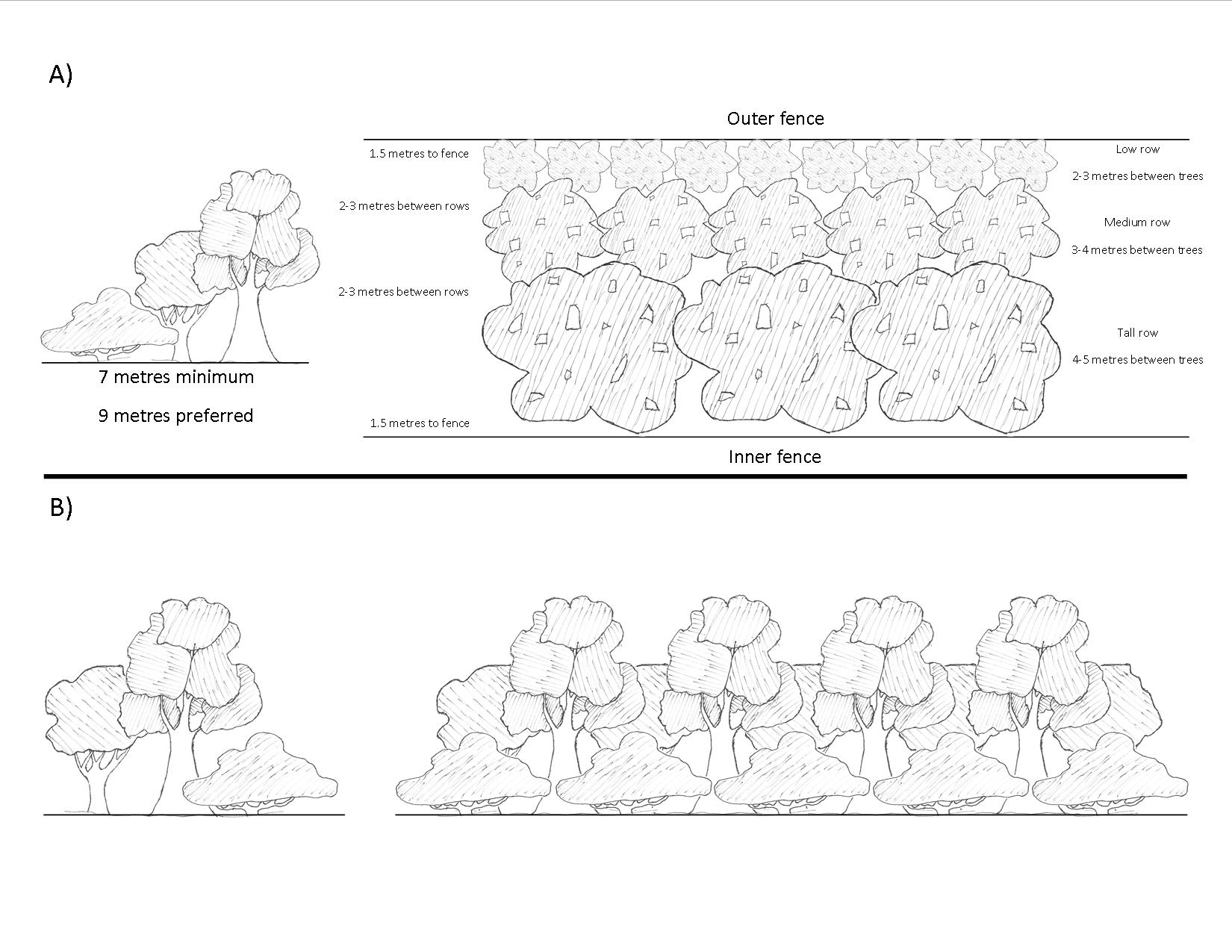A guide to planting trees in Gippsland
When's the best time to plant?
In Gippsland, planting is possible from mid Autumn through to early Summer. Planting within these times eliminates the need for watering, reduces the stress on the plant and makes for easy digging. The best time for planting however, is Autumn through to early Winter. An early planting allows the seedling more time to establish deep root system before the onset of the Summer months. If frosts or waterlogging are a problem then you may have no option but to plant in Spring.
Tree planting can be broken up into three equally important parts:
- Preparation
- Planting
- Aftercare
1. Preparation
What to plant
In any planting project you should have a clear idea of your objectives. Ask yourself - why are you intending to plant trees and what do you hope to achieve in terms of height, shape, flowers and function. Is it for a windbreak, erosion control, aesthetics, timber, firewood, shelter, wildlife habitat. Different plants are suited to different applications so the choice you make is very important. Look at existing plantings and note the plants or features that you like, or obtain a list of local plants. What grows naturally in your own area is a good place to start.
Prepare a plan
Prepare a plantation design, even if it's only a rough sketch. Where possible, try to include remnant vegetation (existing trees and shrubs) into new plantations. Decide where a plantation should be sited to be most effective. Then select species which will satisfy your purpose and grow well in that area. If all this sounds too difficult then discuss the options with us.
Fencing
Plantation fences should be forever, it's best not to pull them down and let stock in.
Domesticated animals such as cattle and sheep will quickly destroy a plantation if given the chance.
They will:
- eat the lower leaves allowing wind pass through underneath
- rub on the trunk and eat the bark
- camp underneath and deposit large quantities of manure which the tree cannot cope with
- stand around the base of the tree, damaging the surface roots with their hooves
The one exception is for agroforestry (growing timber and stock on the same land).
If you do allow the stock in, make sure it's only for short periods.
Building a 6 strand barbed wire fence is sufficient, but a 2-3 wire electric fence is BEST.
If possible erect the fence before planting, and avoid the use of temporary fences.
Spacing between plants
For windbreaks:
- shrubs 2-3 m apart
- small trees 3-4 m apart
- medium/tall trees 4-5 m apart
For mass planting, a grid of 2.5-3 m square.
For timber production, a grid of 2.5-3 m square.
For spacing between trees and fences, see diagram below. The closer you plant them, the quicker you'll get a result, but the more it will cost.
Shelterbelt Design
Single row

Double row

Triple row

The soil
Where the soil is poor, the use of a ripper to penetrate the surface is recommended but by no means essential. In good soils it's not as important, but still worth doing if you have the equipment handy. Ripping the soil aids root development and allows water in. This is best done when the soil is dry so that it shatters, rip to a depth of approximately 50 cm. Avoid cultivating the ground as this only improves the seedbed for weeds.
Weed control
One of the most important facets of tree planting is the removal and control of competing grasses for the first 12 months of plant growth.
Failure to remove such competition will severely affect the plant's performance or even lead to its death.
Established grasses will absorb water and soil nutrients quicker leaving little for new plants.
Several methods of control are available, all of which work best on very short grasses:
- Spray with Glyphosate (Roundup).
Best done before planting. Don't spray the whole area as this can lead to erosion, instead spray spots of about 750mm in diameter. Use a dye with the spray to help space the spots evenly. Spray as close to the time of planting as possible, about 2-3 weeks before planting in Autumn and Spring, and 3-4 weeks in winter. Roundup is inactivated within 3 to 4 days after contact with the soil and therefore lacks any residual effect. Roundup can be used in combination with residual herbicide such as Simazine. This is applied to cultivated or bare soil to retard weed germination. However, extreme care must be used when planting into soils treated in this way so as to avoid contact of the plant roots with the soil. -
Mulch using newspaper, carpet or commercial weed mats.
This method is very effective but is only suitable when planting small numbers. -
Chip away the surface grass with a hoe.
Again, suitable only when planting small numbers.
2. Planting
General
Plant on dull overcast days if possible. Avoid windy or hot days. Thoroughly soak the plants beforehand by fully immersing in a trough or sink for 2-3 minutes. This helps to remove them from the tube and reduces stress on the plant once in the soil.
Digging
Hamilton tree planters are a quick and efficient took for plant large quantities. Digging a hole with a spade can be time consuming but is the best option for small quantities. Avoid using post hole digger.
Planting
Invert the tube and gently tap the plant out into your hand. If having difficulty, tap the edge of the tube onto a hard object such as fence post. Don't disturb the roots but simply place in the hole and cover over with soil. Plant at the same level as the ground or slightly lower as the potting mix can wash away if planted too high. Make sure the bottom of the potting mix comes into contact with the base of the hole. Firm down he soil and water in to remove any air pockets. There is usually no need to water again, a good soak every 2 to 3 weeks is sufficient.
Fertiliser
Yes native plants do respond to fertiliser but they will survive without it in most Gippsland soils. When planting local species there should generally be no need to fertilize. However, if soil reserves have become depleted, fertilizer may be necessary. Slow release fertilisers that are low in Phosphorous are best. Avoid the use of manure or superphosphate, especially on Banksia and Grevillea species. If you must use manure, make sure it is aged and use small amounts.
Tree Guards
Tree guards provide effective protection for young seedlings where strong winds or vermin are a problem. By no means are they necessary for every planting. When using plastic tree guards, it is important to control the grass using mulch or weed mats otherwise the plant will be swamped inside the guard. Mesh guards are a cheaper alternative for vermin control and give some stability in the wind. Tree guards do not prevent frost damage to plants.
Vermin control
For rabbits and hares, use tree guards in association with an eradication program at or before the time of planting. For wallabies, wombats and native rats tree guards provide little protection. Try an additional electric wire on the perimeter fence or a handful of blood and bone sprinkled around the plant. Alternatively, seek advice form the DNRE.
Stakes
Ideally, staking should only be used to mark the position of seedlings. Trees tend to rely on them and and can become weak when the stake breaks. Don't bother staking up fallen trees, instead replace the tree as soon as possible. If you must use a stake, tie it loosely so that the plant has some room to move.
3. After-care
It is unwise to plant more in one year than can be properly maintained during the following year.
Regular monitoring of the site will ensure high success.
Where possible, weed control should be carried out for at least a year after planting.
An area of approximately 750mm in diameter around the plant should be kept clear.
A variety of treatments are possible:
-
Repeated applications of a knockdown herbicide such as Roundup. Four options available:
- Spray the grass around the plants with half strength Roundup (0.5%), but be careful.
- Remove the lower limbs of the plant to about 10cm from the ground, wait 24 hours and spray the grass with 1% Roundup. Spray on the trunk has no effect, however any spray on the leaves may kill the plant.
- Put a piece of 100mm downpipe over the plant and spray with 1% Roundup. Be careful not to let the spray drip onto the plant.
- Use a ropewick applicator.
- Application of a residual herbicide such as Simazine to bare soil. Plants can tolerate a little Simazine on the leaves with no harmful effect.
- Mulch thickly over newspaper with at least 10 sheets, preferably more and use plenty of mulch.
- Use weed control mats or old carpet.
More after-care tips
- DO NOT mow the grass right up to the base of the tree. This will encourage the grass to grow even quicker and therefore take more goodness and water away from the new plant.
- Replace dead or damaged trees as soon as possible.
- Watch for caterpillars, shake off into a bucket and kill or use Dipel or Pyrethrum. Both are very safe for human use.
- Watch for rabbits and hares and control if necessary.
- Check tree guards.
- Avoid watering if possible. However, in dry weather, a good soak every 2 to 3 weeks is sufficient.
- Prune (for shrubs only) after flowering. This promotes more flowers, longer life and keeps plants bushy.
General Rules of Thumb
There are exceptions to these rules but in general they are useful as a guide.
- The quickest growing plants are usually the ones that will grow the tallest. In one year a tall gum tree may grow 1.5 metres whereas a small shrub may only grow 15cm.
- The smaller the plant, the better the flowers. Medium to large trees usually have poor flowers.
- Plants grow best in their natural environment. Don't expect a desert plant to grow well near the coast.
- The larger a plant grows, the longer it will live.
- The smaller the plant when planted, the greater chance of survival, due to reduced stress.
- Trees and shrubs will spread if planted far apart and grow tall and thin if planted close together.